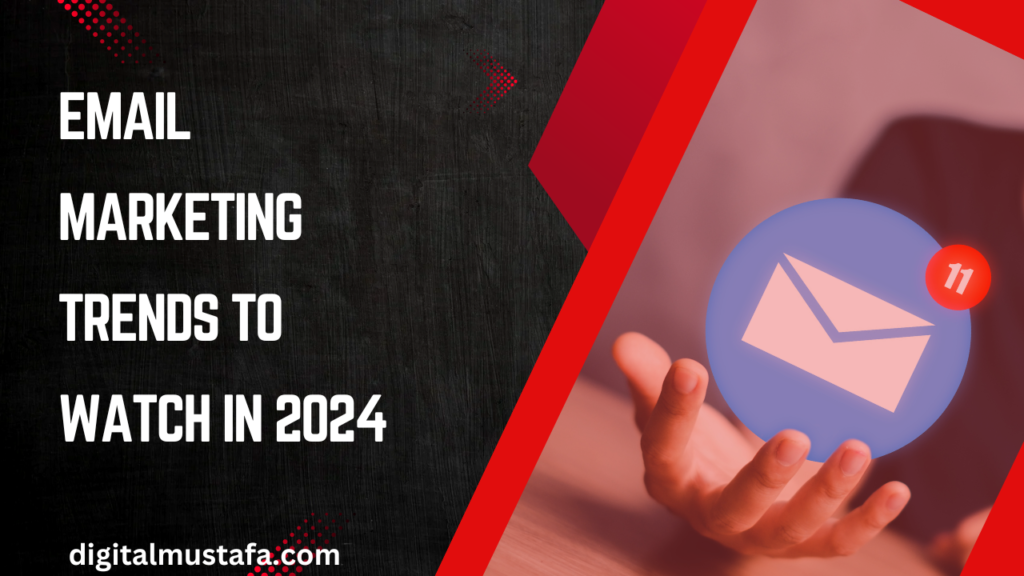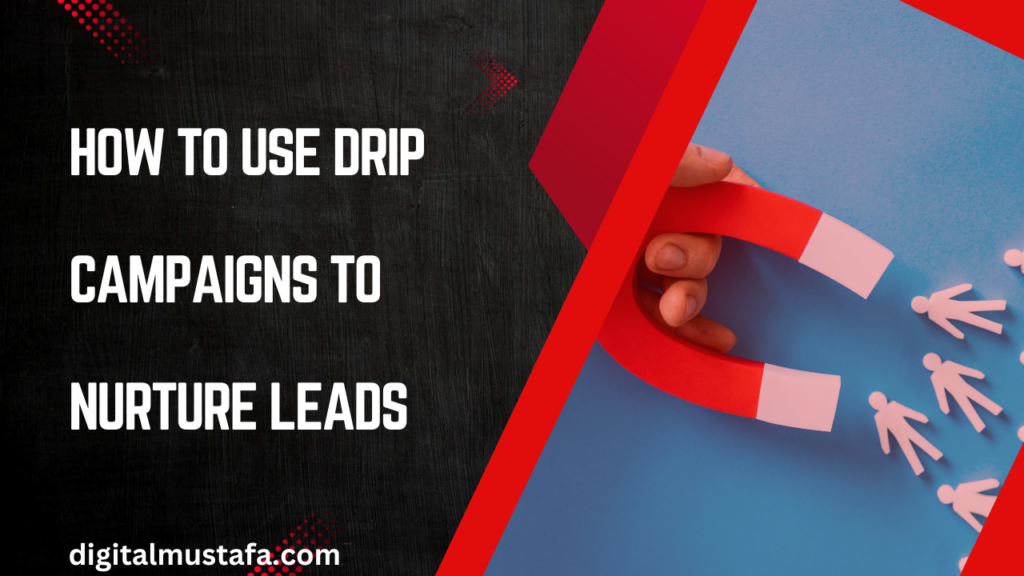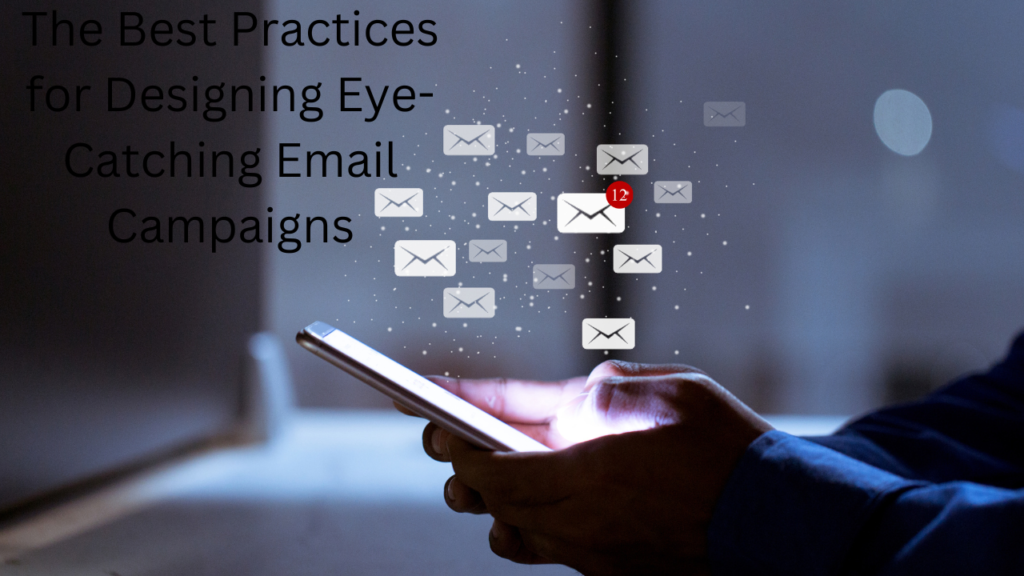Email marketing continues to be one of the most effective digital marketing strategies for businesses across industries. As we head into 2024, the landscape of email marketing is evolving rapidly, driven by advancements in technology, changes in consumer behavior, and increasing concerns about privacy and data security. To stay ahead of the competition, marketers need to be aware of the latest trends and adapt their strategies accordingly.
This blog post explores the key email marketing trends to watch in 2024, offering insights and actionable tips to help you optimize your email campaigns and drive better results.
The Growing Importance of Personalization
Personalization has been a significant trend in email marketing for several years, but in 2024, it will become even more critical. Consumers expect personalized experiences, and generic, one-size-fits-all emails are no longer effective. Personalization goes beyond simply addressing the recipient by their first name; it involves delivering content that is highly relevant to the individual’s preferences, behaviors, and past interactions with your brand.
Advanced Segmentation and Targeting
In 2024, advanced segmentation and targeting will be essential for delivering personalized emails. Marketers will need to use data-driven insights to create more precise segments based on various factors such as demographics, purchase history, engagement levels, and browsing behavior.
How to Implement Advanced Segmentation:
- Behavioral Segmentation: Group subscribers based on their interactions with your website, such as the products they’ve viewed or purchased, to tailor your emails accordingly.
- Predictive Analytics: Use predictive analytics to forecast future behaviors and preferences, allowing you to send emails that anticipate customer needs.
- Dynamic Content: Incorporate dynamic content blocks in your emails that change based on the recipient’s data, ensuring that each subscriber receives content that resonates with them.
Example Table: Types of Segmentation and Their Applications
| Segmentation Type | Criteria | Application |
|---|---|---|
| Demographic | Age, gender, income, location | Targeting specific offers or product categories |
| Behavioral | Browsing history, purchase behavior, email opens | Sending personalized product recommendations |
| Engagement | Frequency of interactions, recency of engagement | Re-engagement campaigns for inactive subscribers |
| Psychographic | Interests, lifestyle, values | Crafting content that aligns with subscriber values |
Hyper-Personalized Email Campaigns
Hyper-personalization takes personalization to the next level by leveraging artificial intelligence (AI) and machine learning (ML) to analyze vast amounts of data and deliver highly customized content. In 2024, hyper-personalized email campaigns will become more prevalent as brands strive to create more meaningful connections with their audiences.
Benefits of Hyper-Personalization:
- Increased Engagement: Emails that speak directly to the recipient’s interests and needs are more likely to be opened and acted upon.
- Improved Customer Loyalty: Personalization fosters a sense of connection and loyalty, as subscribers feel that the brand understands and values them.
- Higher Conversion Rates: Tailored content and offers lead to higher conversion rates, as subscribers receive relevant promotions that they are more likely to act on.
Quote: “In 2024, hyper-personalization will be the key to standing out in the crowded inbox. Brands that can deliver highly relevant and timely content will see the greatest success.” — Sarah Johnson, Email Marketing Expert
The Rise of AI-Powered Email Marketing
Artificial intelligence (AI) is transforming the way businesses approach email marketing. In 2024, AI-powered tools and technologies will play a central role in optimizing email campaigns, from content creation to delivery timing.
AI-Driven Content Creation
AI-driven content creation tools are becoming increasingly sophisticated, enabling marketers to generate email copy, subject lines, and even entire campaigns with minimal human intervention. These tools analyze data from past campaigns, customer interactions, and industry trends to craft content that is likely to resonate with the target audience.
How AI-Driven Content Creation Works:
- Subject Line Optimization: AI tools can generate multiple subject line variations and predict which ones are most likely to result in higher open rates.
- Automated Copywriting: AI can create personalized email copy based on individual subscriber data, ensuring that each recipient receives a message that speaks directly to them.
- A/B Testing at Scale: AI can automate A/B testing by analyzing performance data in real-time and adjusting content on the fly to maximize results.
Example Table: AI-Powered Tools and Their Applications
| AI Tool Type | Application | Benefits |
|---|---|---|
| Subject Line Generators | Create and optimize email subject lines | Higher open rates, increased curiosity |
| Copywriting Tools | Automate the creation of personalized email copy | Consistent messaging, time-saving |
| A/B Testing Automation | Real-time testing and optimization | Improved campaign performance, data-driven decisions |
Predictive Analytics and Customer Insights
AI’s ability to process vast amounts of data quickly makes it an invaluable tool for predictive analytics. In 2024, more brands will use AI-powered predictive analytics to gain deeper insights into customer behavior and preferences, allowing them to send more targeted and timely emails.
Applications of Predictive Analytics in Email Marketing:
- Customer Lifetime Value (CLV) Prediction: AI can predict the potential lifetime value of each subscriber, helping marketers prioritize high-value customers with personalized offers.
- Churn Prediction: By analyzing engagement patterns, AI can identify subscribers at risk of churning and trigger re-engagement campaigns to retain them.
- Purchase Propensity: Predictive analytics can estimate the likelihood of a subscriber making a purchase, enabling marketers to send targeted promotions at the right time.
Quote: “AI is revolutionizing email marketing by providing deeper insights and enabling more precise targeting. In 2024, marketers who harness the power of AI will gain a significant competitive edge.” — John Smith, Digital Marketing Strategist
The Shift Towards Privacy and Data Security
As data privacy regulations become stricter and consumers become more aware of their rights, email marketers must prioritize privacy and data security in 2024. Ensuring compliance with regulations like GDPR and CCPA is not only a legal obligation but also a critical component of building trust with your audience.
GDPR and CCPA Compliance
The General Data Protection Regulation (GDPR) in Europe and the California Consumer Privacy Act (CCPA) in the United States set the standard for data privacy. In 2024, compliance with these regulations will remain a top priority for email marketers.
Key Compliance Practices:
- Transparent Data Collection: Clearly inform subscribers about the data you collect and how it will be used. Obtain explicit consent before adding them to your email list.
- Data Minimization: Only collect the data necessary for your email campaigns. Avoid gathering excessive or irrelevant information.
- Easy Unsubscribe Options: Provide a simple and straightforward way for subscribers to opt out of your emails. Ensure that unsubscribe requests are processed promptly.
- Data Access and Deletion: Offer subscribers the ability to access, correct, or delete their data upon request.
Example Table: Data Privacy Regulations and Their Impact on Email Marketing
| Regulation | Key Requirements | Impact on Email Marketing |
|---|---|---|
| GDPR | Consent, data access, data protection | Requires explicit consent and data security measures |
| CCPA | Right to know, right to delete, opt-out rights | Mandates transparency and easy opt-out options |
| ePrivacy Regulation | Consent for tracking, cookie usage | Impacts how data is collected and used for email marketing |
Zero-Party Data Collection
Zero-party data refers to information that customers intentionally and proactively share with a brand, such as preferences, purchase intentions, and feedback. In 2024, collecting and leveraging zero-party data will become increasingly important as consumers seek more control over their personal information.
Benefits of Zero-Party Data:
- Enhanced Personalization: Zero-party data allows for more accurate personalization since it is directly provided by the customer.
- Increased Trust: By asking for information upfront and being transparent about its use, brands can build trust with their audience.
- Compliance-Friendly: Since zero-party data is voluntarily shared, it is less likely to raise privacy concerns and is easier to manage in compliance with data protection regulations.
How to Collect Zero-Party Data:
- Surveys and Polls: Use surveys and polls in your emails to gather insights into customer preferences and interests.
- Preference Centers: Offer a preference center where subscribers can update their information and choose what types of content they want to receive.
- Interactive Content: Incorporate interactive elements like quizzes or assessments that encourage subscribers to share information in exchange for personalized recommendations.
Quote: “In a world where privacy is paramount, zero-party data offers a compliant and effective way to deliver the personalized experiences that consumers crave.” — Emily Brown, Data Privacy Expert
The Growth of Interactive Email Content
Interactive content is becoming a game-changer in email marketing, offering subscribers a more engaging and immersive experience. In 2024, we can expect to see more brands incorporating interactive elements into their emails to capture attention and drive higher engagement.
Gamification and Quizzes
Gamification involves applying game-like elements, such as quizzes, challenges, and rewards, to non-gaming contexts. In email marketing, gamification can make your content more interactive and fun, encouraging subscribers to engage more deeply with your brand.
Examples of Gamification in Emails:
- Quizzes: Include quizzes that help subscribers discover the best product for their needs or test their knowledge on a relevant topic. For instance, a beauty brand could create a quiz titled “Find Your Perfect Skincare Routine,” guiding users to products that match their skin type and concerns.
- Scratch Cards: Add virtual scratch cards that reveal special offers or discounts when “scratched” by the recipient. This element of surprise can significantly boost engagement and conversion rates.
- Spin-to-Win Wheels: Incorporate a spin-to-win wheel where subscribers can win discounts, free products, or exclusive content. This interactive feature adds an element of excitement and can incentivize purchases.
Interactive Polls and Surveys
Interactive polls and surveys embedded within emails allow subscribers to voice their opinions and preferences directly. These tools not only engage your audience but also provide valuable insights that can inform your marketing strategies.
Benefits of Interactive Polls and Surveys:
- Real-Time Feedback: Gather immediate feedback from your audience on new products, services, or content ideas.
- Increased Engagement: Polls and surveys encourage interaction, making subscribers more likely to engage with your brand.
- Personalized Content: Use the data collected from surveys to segment your audience and send more personalized emails.
How to Use Interactive Polls and Surveys:
- Product Feedback: Send surveys after a purchase to gather feedback on the product and the customer’s experience. This data can help you improve future offerings.
- Content Preferences: Use polls to ask subscribers what type of content they’d like to see more of, whether it’s blog posts, videos, or how-to guides.
- Event Planning: If you’re planning a webinar or live event, send a poll asking your audience what topics they are most interested in. This ensures that your content aligns with their preferences.
Example Table: Interactive Email Content Types and Their Uses
| Content Type | Description | Best Used For |
|---|---|---|
| Quizzes | Interactive questions leading to personalized results | Product recommendations, fun engagement |
| Scratch Cards | Virtual cards that reveal prizes or discounts when scratched | Encouraging purchases, driving conversions |
| Spin-to-Win Wheels | A digital wheel where users can spin to win rewards | Increasing engagement, incentivizing purchases |
| Polls and Surveys | Interactive tools for gathering subscriber feedback | Collecting preferences, improving products or services |
The Integration of Email and Omnichannel Marketing
In 2024, email marketing will increasingly become part of a broader omnichannel strategy. Consumers interact with brands across multiple touchpoints, from social media and websites to in-store experiences. Integrating email with other channels ensures a seamless customer journey and a consistent brand experience.
Cross-Channel Consistency
Maintaining consistency across all marketing channels is crucial for building brand recognition and trust. In 2024, successful email marketers will focus on creating a unified message that resonates with their audience regardless of where they interact with the brand.
How to Achieve Cross-Channel Consistency:
- Unified Branding: Ensure that your branding elements—such as logos, colors, and fonts—are consistent across all channels, including email, social media, and your website.
- Coordinated Messaging: Align your messaging across channels to tell a cohesive story. For example, if you’re running a promotion, make sure the offer is highlighted in your emails, on social media, and on your website.
- Synchronized Campaigns: Launch coordinated campaigns that run simultaneously across different channels. Use email to drive traffic to your social media pages or to promote in-store events.
Example Table: Omnichannel Marketing Integration
| Channel | Integration with Email | Benefits |
|---|---|---|
| Social Media | Share email content on social platforms, use social data to personalize emails | Expanded reach, enhanced personalization |
| Website | Use email to drive traffic to specific landing pages, integrate email sign-ups on the site | Increased website traffic, lead generation |
| In-Store Experiences | Promote in-store events or offers via email, use purchase data for email personalization | Improved customer experience, higher engagement |
| SMS | Send SMS reminders for email promotions, offer SMS opt-in within emails | Higher engagement, multi-channel communication |
Automated Cross-Channel Campaigns
Automation will play a significant role in the integration of email and omnichannel marketing. Automated campaigns that trigger based on user behavior across different channels will become more sophisticated in 2024.
Examples of Automated Cross-Channel Campaigns:
- Cart Abandonment: Trigger an email reminder when a customer leaves items in their online shopping cart, followed by a retargeting ad on social media.
- Welcome Series: Start with a welcome email for new subscribers, followed by a series of messages that introduce them to your brand across different channels, including social media and SMS.
- Post-Purchase Journeys: After a purchase, send a thank-you email, followed by a personalized product recommendation on social media or a special offer via SMS.
Quote: “The future of email marketing lies in its ability to seamlessly integrate with other channels. An omnichannel approach ensures that your brand stays connected with consumers at every stage of their journey.” — Rachel Adams, Omnichannel Marketing Expert
Sustainability and Ethical Email Marketing
As consumers become more conscious of environmental and ethical issues, brands must respond by adopting sustainable and ethical practices in their email marketing efforts. In 2024, sustainability will not just be a trend but a necessity for building trust and loyalty.
Green Email Marketing Practices
Sustainable email marketing practices involve reducing the environmental impact of your campaigns while promoting ethical values. This includes everything from minimizing energy consumption to ensuring that your messaging aligns with your brand’s sustainability goals.
Green Email Marketing Strategies:
- Reduce Email Frequency: Sending fewer but more targeted emails can reduce the energy consumption associated with email marketing. Focus on quality over quantity.
- Use Eco-Friendly Design: Minimize the use of heavy images and videos that require more data to transmit, opting for lightweight design elements instead.
- Promote Sustainability: Highlight your brand’s sustainability initiatives within your emails. For example, share how your products are made from recycled materials or how your company is reducing its carbon footprint.
Example Table: Sustainable Email Marketing Practices
| Practice | Description | Benefits |
|---|---|---|
| Reduced Email Frequency | Sending fewer, more relevant emails | Lower energy consumption, higher engagement |
| Eco-Friendly Design | Using lightweight, minimalistic email designs | Reduced data transmission, faster load times |
| Promoting Sustainability | Highlighting your brand’s green initiatives | Builds trust, aligns with consumer values |
Ethical Data Practices
Ethical data practices are becoming increasingly important as consumers demand more control over their personal information. In 2024, brands will need to demonstrate their commitment to data ethics in their email marketing strategies.
Key Ethical Data Practices:
- Transparency: Be transparent about how you collect, store, and use subscriber data. Clearly communicate this in your privacy policy and within your emails.
- Consent Management: Ensure that you have explicit consent from subscribers before collecting their data. Provide easy options for subscribers to manage their preferences or opt out.
- Data Security: Invest in robust data security measures to protect subscriber information from breaches or misuse. Regularly audit your security protocols to ensure compliance with the latest standards.
Quote: “Consumers are increasingly concerned about how their data is used. Brands that prioritize ethical data practices will not only comply with regulations but also build stronger relationships with their audience.” — Tom Wilson, Data Privacy Advocate
Conclusion
As we move into 2024, email marketing will continue to evolve, driven by advancements in technology, changes in consumer behavior, and a growing emphasis on privacy and ethics. By staying informed about the latest trends and adopting best practices, marketers can create email campaigns that not only engage their audience but also build trust and drive long-term success.
Whether it’s through hyper-personalization, AI-powered content creation, interactive elements, or ethical data practices, the future of email marketing promises to be more dynamic and consumer-centric than ever before. Embrace these trends, adapt your strategies, and watch your email marketing efforts thrive in the year ahead.


